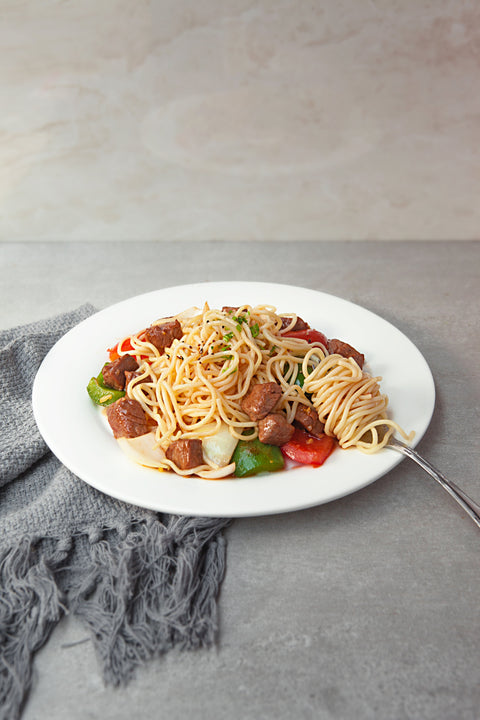The Midlife Noodle Dilemma: Convenience vs. Health
As we enter our middle years, the demands of work, family, and life itself often push us toward quick meal fixes. The allure of instant noodles—fast, comforting, and inexpensive—is undeniable.

However, for those mindful of their health—particularly blood pressure and cardiovascular wellness, which become key concerns in our 40s and 50s—instant ramen presents a major pitfall: Sodium. A single serving of typical instant noodles can contain well over half of your recommended daily sodium intake, often in the form of a salty flavor packet.

The good news? You don't have to choose between convenience and health. There’s a game-changing alternative that offers the speed and satisfaction of a noodle dish without the sodium overload: Haechomiin Kelp Noodles.

Haechomiin Kelp Noodles: The Low-Sodium, No-Cook Lifeline
Haechomiin Kelp Noodles are not a processed, dehydrated noodle. They are a simple, clean food made primarily from kelp (seaweed) and water. This simple composition makes them a nutritional star, especially when compared to high-sodium instant varieties.

|
Feature |
Instant Noodle Packet |
Haechomiin Kelp Noodles |
|
Sodium Content |
Often $\approx 1,000-1,800$ mg per serving (Mostly from seasoning packet) |
Very Low Sodium (Typically less than $100$ mg per serving, depending on the specific product and size) |
|
Preparation |
Boiling water required, waiting time. |
Ready-to-Eat. Simply rinse and drain. No cooking necessary. |
|
Ingredients |
Refined flour, palm oil (often fried), high-sodium flavorings, preservatives. |
Kelp extract, water, and often sodium alginate (a seaweed derivative for texture). Gluten-Free & Low Calorie. |
The Bottom Line on Sodium: The fundamental difference is that the sodium in traditional instant ramen is added for flavor and preservation. Kelp noodles, being a natural food, are inherently low in sodium. This gives you complete control over the salt in your meal.
The Health Power of Low-Sodium for Middle-Aged Adults
Reducing dietary sodium is one of the most impactful, preventative steps you can take for your long-term health:

-
Blood Pressure Management: For many middle-aged individuals, cutting back on salt is key to maintaining healthy blood pressure, which is vital for reducing the risk of stroke and heart disease.
-
Kidney & Fluid Balance: Lower sodium intake helps the kidneys manage fluid more efficiently, reducing water retention and the strain on your cardiovascular system.
-
Taste Bud Reset: By swapping out heavily salted products like instant noodles, you allow your palate to re-sensitize. You’ll begin to truly appreciate the natural, delicious flavors of fresh ingredients—not just salt!
Fast & Flavorful: Building a Low-Sodium Noodle Meal
The neutral taste of Haechomiin Noodles is its greatest strength. It absorbs whatever flavor you pair it with, allowing you to create a satisfying, low-sodium dish in under 5 minutes.

Here’s how to build a heart-healthy, low-sodium bowl:
-
Rinse the Noodles: Open the bag, rinse the noodles well under cold water, and drain. They're ready!
-
Add Flavor—The Healthy Way: Skip the high-sodium soy sauce. Use alternatives like:
-
Low-Sodium Tamari or Coconut Aminos (Use sparingly).
-
Fresh Lemon or Lime Juice for bright flavor.
-
Rice Vinegar or Apple Cider Vinegar.
-
Ginger, Garlic, Chili Flakes, and fresh herbs.
-
Boost the Nutrients: This is where you add volume, flavor, and nutrition:
-
Healthy Fats: Drizzle of toasted sesame oil or a spoonful of natural almond butter.
-
Protein: Chopped grilled chicken, edamame, sliced firm tofu, or a hard-boiled egg.
-
Veggies: Shredded carrot, cucumber, bell peppers, or steamed broccoli florets.

The result? A quick, satisfying, and delicious "instant" noodle meal that supports your health goals, giving you peace of mind with every bite. Make the switch today—your heart (and your time) will thank you.



Comments (0)
There are no comments for this article. Be the first one to leave a message!